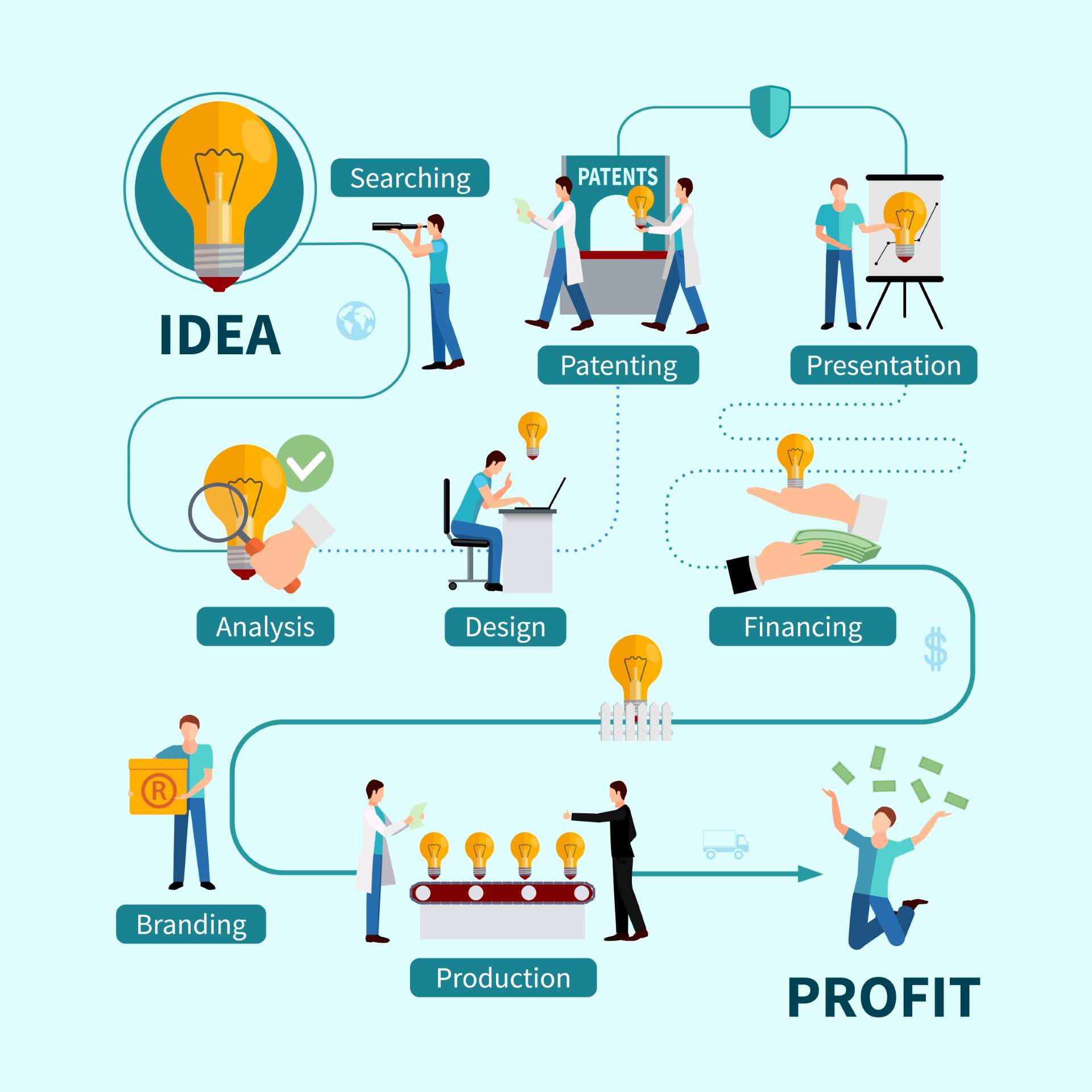In the ever-evolving landscape of innovation and intellectual property, the ability to not only protect but strategically monetize ideas is a critical aspect for inventors and businesses.
This comprehensive guide aims to be a detailed roadmap, unraveling the complexities inherent in the patent lifecycle and providing a nuanced understanding of how each stage presents unique opportunities for revenue generation.
1. Ideation and Monetization Potential
Ideation, often considered the genesis of innovation, is a multifaceted process that extends beyond the mere generation of ideas. It involves a strategic evaluation of the monetization potential inherent in these ideas.
This phase requires a meticulous analysis of market trends, consumer needs, and the economic viability of the innovative concepts. It’s not just about ideation; it’s about ideation with an acute awareness of potential revenue streams.
Things to Consider in the Ideation Stage
- Market Analysis:
Evaluate current market trends and identify emerging opportunities by analyzing consumer needs and unmet demands.
- Industry Research:
Explore relevant industries to understand ongoing developments and identify potential areas for innovation.
- Economic Viability:
Assess the economic feasibility, considering production costs, potential returns, and scalability within existing economic conditions.
- Problem-Solution Fit:
Clearly define the problem your idea addresses and ensure there is a genuine market need for the solution.
- Target Audience:
Define the specific target audience and tailor your idea to resonate with their preferences and challenges.
- Innovation and Uniqueness:
Emphasize innovation and identify a unique selling proposition that sets your idea apart.
- Feasibility Assessment:
Assess the technical feasibility of implementing your idea within existing resources and capabilities.
- Long-Term Viability:
Evaluate the long-term viability of your idea by considering potential shifts in technology, consumer behavior, and market dynamics.
2. Market Research and Licensing Opportunities
The journey through the patent lifecycle begins with in-depth market research. It’s about understanding the market landscape in its entirety. This encompasses identifying potential licensing opportunities through a comprehensive exploration of market demands, competitor landscapes, and emerging trends.
The goal is not just to protect intellectual property but to strategically align it with the precise needs of the market, laying the foundation for future lucrative licensing agreements.
3. Crafting a Marketable Patent Application
Drafting a patent application is an art that goes beyond the technicalities of the invention. It transforms into a compelling narrative, highlighting not only the uniqueness of the innovation but its commercial appeal.
This step is pivotal in making intellectual property not just defensible but attractive to potential investors, licensees, and the broader market.
4. Strategic Patent Filing
Strategic patent filing is akin to charting a course on a global map. It’s a deliberate selection of jurisdictions for patent protection. This strategic move requires foresight and planning, considering not only the potential market reach but also the nuanced landscape of potential infringement risks.
A well-thought-out filing strategy is not just a defensive move; it’s an offensive strategy to optimize the overall monetization potential of the intellectual property.
5. Negotiating Licensing Agreements
Post-patent approval, the negotiation of licensing agreements becomes a sophisticated dance of interests. It’s not merely a legal process; it’s a strategic maneuver to find a harmonious balance resulting in fair compensation and mutually beneficial partnerships.
This phase is where the theoretical aspects of intellectual property transition into tangible and financially rewarding collaborations.
6. Diversification and Commercialization
The patent lifecycle doesn’t conclude with protection; it extends into diversification and commercialization. Strategic partnerships become instrumental in diversifying revenue streams.
These partnerships, whether with manufacturers, distributors, or retailers, open avenues for commercializing inventions on a broader scale. It’s a proactive move towards maximizing the potential for revenue generation.
7. Intellectual Property Valuation
As the intellectual property portfolio expands, the need for accurate valuation becomes imperative. Intellectual property valuation is not just a theoretical exercise; it’s a practical necessity. It involves a meticulous assessment of both tangible and intangible aspects of the portfolio.
The valuation becomes a benchmark, providing a clear understanding of the intellectual property’s financial worth in the market.
8. Monetization Through Litigation
In unfortunate instances of patent infringement, litigation becomes a strategic move to protect and preserve monetization interests. While litigation is often considered a last resort, it’s not just about legal success; it represents a combination of legal strategy and financial safeguarding.
Success in litigation is not merely a legal triumph but a financial victory that upholds the monetary value of intellectual property in a competitive landscape.
Conclusion
Monetizing innovation is an intricate journey that demands a proactive and strategic approach across the entire patent lifecycle. From the germination of ideas to the defense of patent rights, each stage is an opportunity for revenue generation.
By intertwining a profound understanding of the patent process with astute and strategic monetization approaches, innovators can not only shield their intellectual property but also transform their ideas into enduring and lucrative financial assets.

As the editor of the blog, She curate insightful content that sparks curiosity and fosters learning. With a passion for storytelling and a keen eye for detail, she strive to bring diverse perspectives and engaging narratives to readers, ensuring every piece informs, inspires, and enriches.










